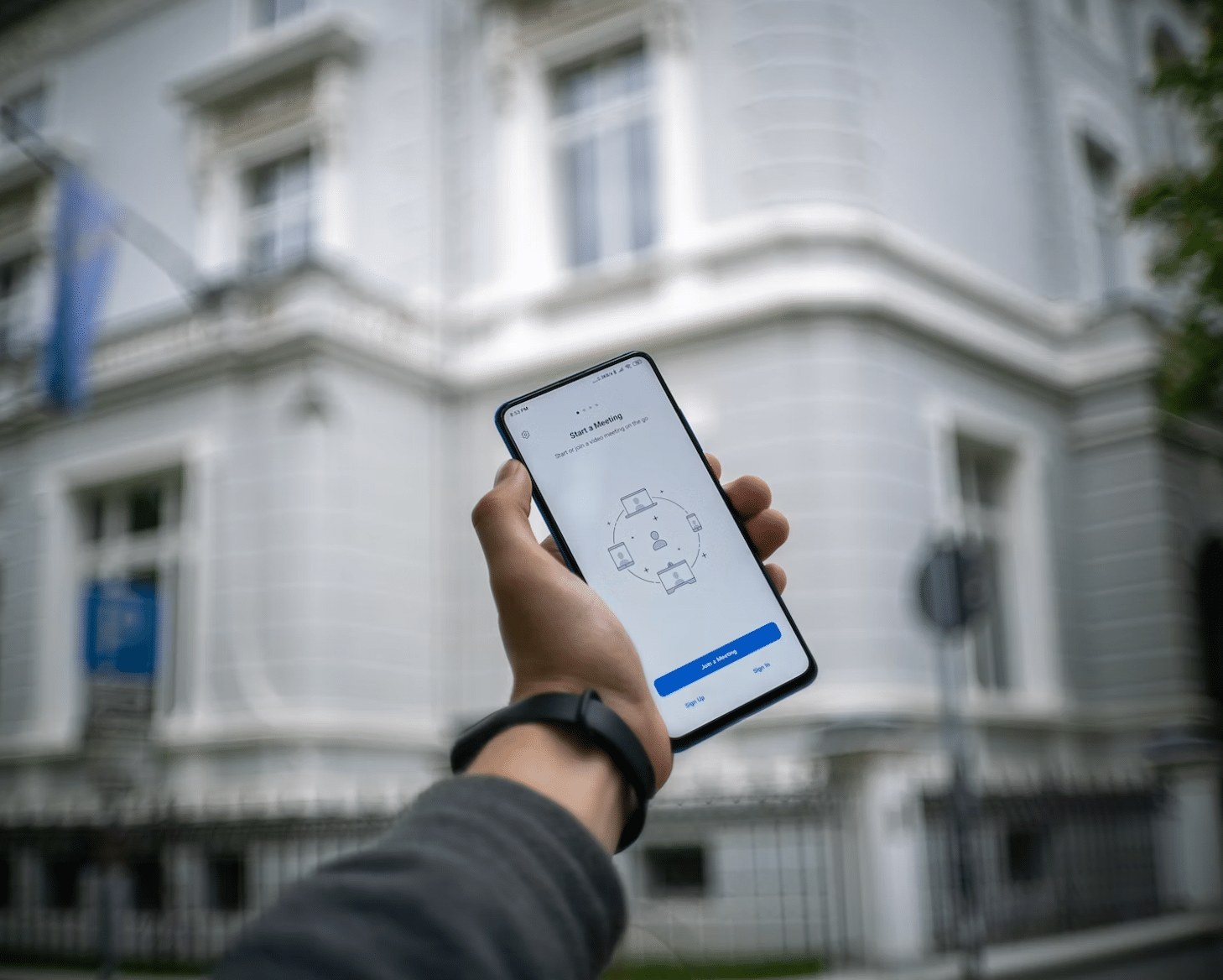How PWA Offline Capabilities Works
Explore the transformative power of Progressive Web Apps (PWAs) in the digital realm. Dive deep into their unique capabilities, from bridging the divide between web and native apps to their standout offline functionalities. Learn about the benefits of PWAs, their offline capabilities, caching strategies, performance optimization, and more. Understand why businesses are increasingly adopting PWAs for a seamless, user-friendly, and cost-effective solution.

Table of Contents
Table of Contents
What is a Progressive Web App (PWA) and How Does It Differ from a Traditional Web App?
A Progressive Web App (PWA) is a type of application software delivered through the web, built using common web technologies including HTML, CSS, and JavaScript. It is intended to work on any platform that uses a standards-compliant browser, including both desktop and mobile devices. The concept of a PWA is to bridge the gap between web experiences and native applications, offering users a high level of usability that rivals that of native applications.
Key Characteristics of PWAs
Progressive: They work for every user, regardless of browser choice, because they are built with progressive enhancement as a core tenet.
Responsive: They fit any form factor: desktop, mobile, tablet, or forms yet to emerge.
Connectivity-independent: Service workers allow PWAs to work offline or on low-quality networks.
App-like: PWAs feel like an app to the user with app-style interactions and navigation.
Fresh: They are always up-to-date thanks to the service worker update process.
Safe: Served via HTTPS to prevent snooping and ensure content hasn’t been tampered with.
Discoverable: They are identifiable as “applications” thanks to W3C manifests and service worker registration scope allowing search engines to find them.
Re-engageable: Features like push notifications make it easy to re-engage with users.
Installable: Allow users to “keep” apps they find most useful on their home screen without the hassle of an app store.
Linkable: Easily share via URL, do not require complex installation.
Differences from Traditional Web Apps
Installability and App-like Interface: Unlike traditional web applications, which are typically accessed through a browser and not installed on the device, PWAs offer an app-like experience and can be added to the home screen of the device. This allows PWAs to be launched in the same manner as native applications, offering a full-screen experience without the browser interface.
Offline Functionality
One of the fundamental differences is the capability of PWAs to function offline or on low-quality networks. This is facilitated by service workers, which cache the application’s assets. This means that once a user has visited a PWA, they can return and interact with the application even without an internet connection, a feature not available in most traditional web applications.
Performance Enhancements
PWAs are designed to be extremely efficient. Thanks to modern web capabilities, service workers can smartly cache and serve text, images, and other content which drastically reduces load times and improves performance, making them significantly faster than traditional web applications.
Push Notifications
This feature allows PWAs to send users notifications similarly to native applications. Whether it’s a sales promotion or important news, these notifications can keep users engaged and informed, enhancing the overall user experience.
Safety and Security
Being served over HTTPS, PWAs offer a level of security that ensures that all transferred data is encrypted and secure from interception by third parties. This is particularly important in a digital environment where security concerns are paramount.
What are the security considerations for PWAs, especially in offline scenarios?
PWAs should use HTTPS for secure data transmission. Additionally, developers should be cautious about storing sensitive data offline and ensure that service workers and caches are updated regularly to prevent security vulnerabilities.
Progressive Web Apps (PWA) and their Benefits
Progressive Web Apps (PWAs) have altered the digital landscape by bridging the gap between web and native applications. They offer a unique blend of web’s wide reach and native app’s user experience. But what exactly are PWAs, and why are they gaining so much traction?
At its core, a PWA is a web application that uses modern web capabilities to deliver an app-like experience to users. Front-end development plays a pivotal role in crafting the interactive and user-centric interface of PWAs. They can be installed on the user’s device, run offline, and even send push notifications, just like native apps. However, unlike native apps, they are not bound to specific platforms and don’t require app store approvals, making them a more flexible and accessible solution for businesses and developers.
The benefits of PWAs are manifold:
- User-friendly: With the ability to work offline and load instantly, PWAs offer a seamless user experience, reducing bounce rates and increasing engagement.
- Cost-effective: Developing a PWA eliminates the need to create separate apps for different platforms, saving time and resources.
- Cross-platform: Their cross-platform nature ensures a consistent look and feel across all devices, enhancing brand consistency.
Offline Capabilities of Progressive Web Apps
One of the standout features of PWAs is their ability to function offline. This is achieved through service workers – scripts that run in the background, separate from the web page, enabling features like content caching and push notifications. When a user visits a PWA for the first time, the service worker caches essential assets. This means that even if the user loses their internet connection, the PWA can still deliver content, ensuring uninterrupted user experience.
- Enhanced user satisfaction in regions with unstable internet connections.
- Consistent access to content, enhancing user satisfaction and retention.
Optimizing performance in a PWA in offline mode
It’s crucial to minimize the size of assets, use efficient caching strategies, and optimize images and scripts for better performance, especially when the app is offline.
Implementing Offline Caching for a PWA
Implementing offline caching in a PWA involves several steps. The first is registering a service worker. Once registered, the service worker can intercept network requests and decide how to respond to them. Depending on the caching strategy chosen, the service worker can serve cached content, fetch fresh data from the network, or use a combination of both.
- Various caching strategies to choose from, such as Cache First, Network First, and Stale While Revalidate.
- The choice of strategy depends on the nature of the content and the desired user experience.
Limitations or Trade-offs to Consider When Developing a PWA
PWAs have significantly altered the landscape of mobile and web app development, offering a bridge between the reach of web apps and the engagement of native applications. While PWAs come with many benefits, such as offline capabilities and no need for app store approvals, there are still several limitations and trade-offs that developers and businesses need to consider. Understanding these nuances is crucial for making informed decisions about whether a PWA is the right choice for a particular project.
Hardware Access and Functional Limitations
While PWAs have come a long way in accessing native device features, they still face limitations compared to native apps. PWAs run within a browser environment, which restricts full access to device hardware and operating system features. For instance, advanced Bluetooth capabilities, near-field communication (NFC), background services, and certain sensor data that are readily available to native applications might be inaccessible or limited in PWAs.
Imagine a scenario where a fitness app needs to constantly track a user’s physical activity, including steps and heart rate, even when the app is not actively used. A native app can effortlessly run in the background and use device sensors to provide real-time updates. A PWA, on the other hand, would struggle with such persistent background processing and real-time sensor data access.
Performance Considerations
Although PWAs are incredibly efficient, the performance might still lag behind that of native apps, especially on complex animations and graphical applications. Native apps are compiled into machine code, which the device’s processor directly executes, allowing them to leverage the maximum potential of the underlying hardware.
Consider a high-end game with intensive graphics and real-time calculations; a native app can leverage the device’s GPU (Graphics Processing Unit) to render smooth, immersive graphics. A PWA, constrained by the capabilities of the browser’s rendering engine, may not perform as well under similar stress.
Consistency Across Browsers
PWAs rely on the features supported by the browser, and despite the rapid evolution of web standards, there is still variability in how different browsers support these standards. Features like service workers, push notifications, and offline capabilities are implemented differently across browsers. This can lead to inconsistent behaviors and experiences depending on the user’s browser and version.
A developer crafting a PWA must constantly be aware of these differences, requiring them to design and test the app across multiple browsers to ensure all users have a seamless experience. This need for extensive testing and potentially additional development work to handle discrepancies adds complexity and time to the project.
SEO Challenges
While PWAs are discoverable in theory—thanks to their presence on the web and capabilities for being indexed by search engines—achieving optimal search engine optimization (SEO) can be more challenging than with traditional websites. The dynamic nature of PWAs, reliance on JavaScript, and single-page application architectures can complicate SEO strategies.
Imagine deploying a PWA where the main content is loaded dynamically and depends heavily on JavaScript. Search engines may have difficulties indexing dynamic content compared to static content, requiring additional configurations and optimizations to ensure visibility.
Update and Maintenance
While bypassing app store approvals is often seen as an advantage, it also means losing the structured review process that can serve as a quality check for applications. PWAs need a robust internal process to ensure updates do not degrade the app or introduce new bugs, as users can instantly access the latest version without going through an app update process.
Optimizing Performance and User Experience in Offline Mode
While offline capabilities are a significant advantage, it’s essential to ensure that the PWA remains performant in offline mode. This involves optimizing assets, reducing their size, and ensuring efficient data storage. Images should be compressed, and scripts minified to reduce load times. Additionally, using IndexedDB can help store larger volumes of structured data, ensuring that the app remains responsive even with significant amounts of cached content.
- User feedback: Informing the user about the offline status using banners or notifications.
- Ensuring that the user is aware of the app’s status and can adjust their actions accordingly.
Considerations for Developing and Deploying a PWA
Developing and deploying a PWA requires careful planning and consideration. One of the primary considerations is cross-browser compatibility. While most modern browsers support PWAs, there might be variations in how they handle certain features. Regular testing across different browsers can help identify and rectify these discrepancies.
- Security: PWAs should always be served over HTTPS to ensure data integrity and user privacy.
- User engagement: Leveraging features like push notifications to enhance user loyalty.
In conclusion, Progressive Web Apps represent the future of web development, offering a perfect blend of web accessibility and native app functionality. By understanding their features and benefits, businesses can leverage PWAs to deliver superior user experiences and drive growth.
FAQ of Progressive Web Apps and Offline Capabilities
You can test a PWA's offline capabilities by disabling your internet connection and trying to access the app. Additionally, browser developer tools offer options to simulate offline conditions.
PWAs might not support all native device features, and their performance can vary across different browsers and devices.
No, PWA refers to web apps with enhanced capabilities, while headless refers to backend systems without a front-end interface.
Yes, PWAs are designed to work seamlessly across both mobile and desktop platforms.
While both are web applications, PWAs offer additional features like offline capabilities, push notifications, and the ability to be installed on a device.
Given the increasing demand for versatile and efficient web solutions, PWAs are expected to play a significant role in the future of web development.
Offline testing refers to evaluating a web app's functionality without an active internet connection.
Yes, PWAs can cache images using service workers and caching mechanisms, allowing them to be accessed offline.
PWAs combine the best of web and native apps, offering cross-platform compatibility, offline capabilities, and no need for app store approvals, making them a preferred choice for many businesses.
Optimizing a PWA involves reducing asset sizes, implementing efficient caching strategies, and ensuring responsive design for cross-device compatibility.
Offline functionality refers to a web app's ability to operate and provide features even without an active internet connection.





